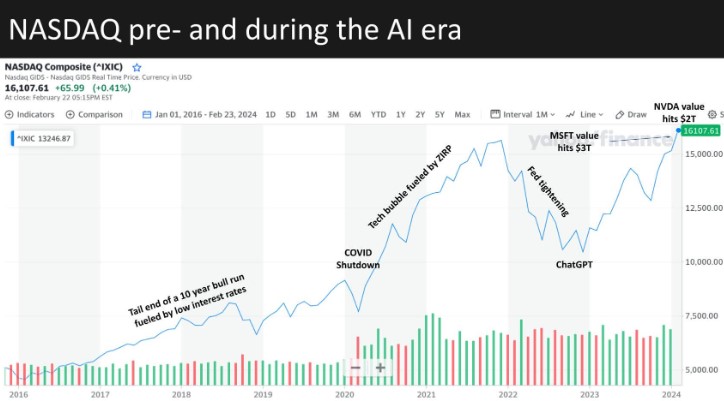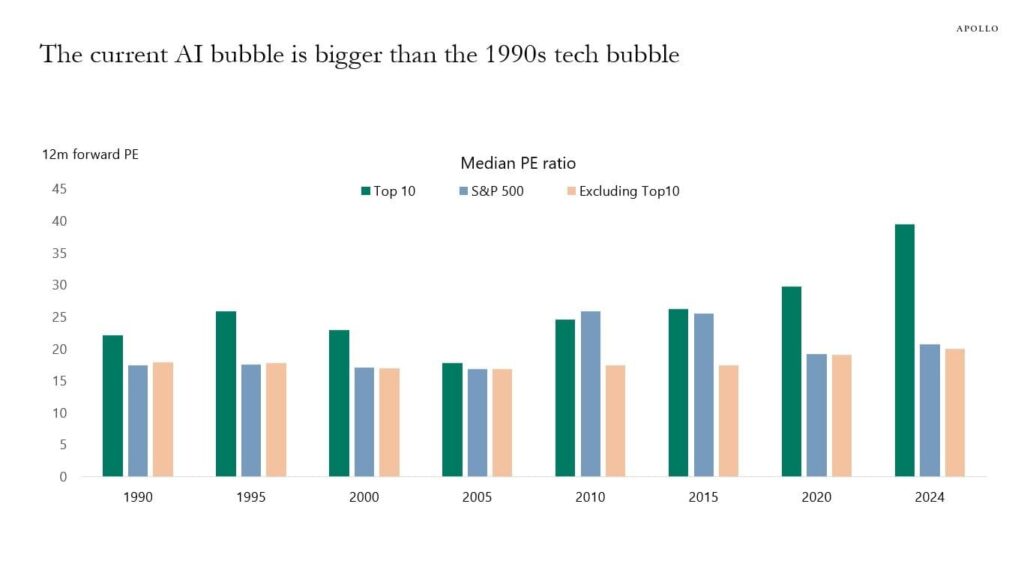The stock market experiences cycles of growth and decline. However, bubbles can form in exceptional cases where real-world events outweigh technical indicators. These bubbles can potentially burst, causing consequences that persist for years.
Many wonder if the current artificial intelligence surge will crash like the dot-com bubble. Given the striking similarities, mainly the recent excitement in the stock market after Nvidia’s (NASDAQ: NVDA) earnings report, it’s a valid concern. While it’s tempting to think of AI as a whole new era, it’s important to note the significant parallels.
Similarities with the dot-com bubble
Similar to the dot-com era, the realm of AI presents us with a vast and immeasurable market potential. Reflecting on the dot-com boom, we witnessed the emergence of social media, which introduced unforeseen risks.

The AI journey resembles the dot-com era—swift innovation, immense market opportunities, and investor excitement. However, today’s landscape boasts sturdier business models, quicker innovation, and a transition towards augmenting cognitive capabilities. While the future holds immense potential, it’s crucial to heed emerging risks and avoid overenthusiastic investment.

Although it may be challenging to discern the broader trends from current chart data, similarities are already emerging in stock market performance. For instance, there’s a notable resemblance to the years preceding the initial surges in Nasdaq performance, which eventually led to the potential peak of the bubble.
This time, is the stock market bubble even worse?
According to Apollo, a prominent financial education institution, the current AI bubble dwarfs the tech bubble of the 1990s, suggesting that the dot-com era was merely a precursor to the current situation.
They highlight the forward P/E ratio for the top 10 tech stocks, which currently stands at approximately 40 times. This contrasts starkly with the peak of the dot-com bubble in 2000 when the forward P/E for these stocks was around 26 times.

Moreover, the current ratio far exceeds the peaks observed in 1990 (around 23 times) and 1995 (approximately 26 times). Interestingly, despite the vitality in the tech sector, the S&P 500 maintains a forward P/E ratio of about 22 times, which is lower than the levels seen in both 2010 and 2015.
This suggests a complex and possibly precarious situation within the market, with the tech sector experiencing a significant valuation surge while the broader market maintains a relatively stable valuation.
Buy stocks now with eToro – trusted and advanced investment platform
Disclaimer: The content on this site should not be considered investment advice. Investing is speculative. When investing, your capital is at risk.








